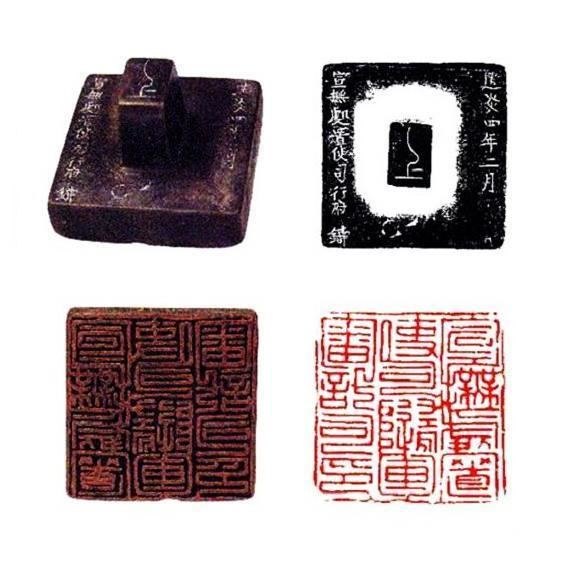 | ||
Side carving (simplified Chinese: 边刻; traditional Chinese: 邊刻; pinyin: biānkè) is a form of traditional seal carving techniques that originated in the ancient China. It was later introduced to other countries in East Asia and has gained popularity among contemporary seal artists from regions including Hong Kong, South Korea, Japan, Singapore, etc. It mainly focuses on developing pattern design skills and techniques applied to the carving of side surfaces of a seal, which distinguishes itself as a unique carving technique from knob carving (head part) and face carving (bottom part). It decorates the side surfaces of seals with literal or pictorial stuffs.
Contents
History
The history of such art can be traced back to as early as Late Zhou and Qin Dynasties, when the government or official seals had some short notations on their side surfaces, indicating the owner of the seal (by engraving the owner's name), the maker of the seal (by engraving the craftsman's name), the date of making this seal. But during those periods, such notations appeared only occasionally and were normally very brief.
In the Late Yuan Dynasty, such art style became more popular, accompanying with the appearance of some great and specialized seal artists, such as Wang Mien (王冕).
In the Ming and Qing Dynasties, the seal engraving art was commonly seen. The art became prosperous first in Mid and Late Ming Dynasty, when the scholar-artists became dominant in southeast China.
With characters
When in this style, the words (relatively short ones) engraved on the surfaces sometimes are more specifically mentioned as Bian Kuan (Chinese: 邊款/边款; literally means "side words") or Bian Zhu (Chinese: 邊注/边注; literally means "side notations" or "side remarks").
If there's a whole poem or essay engraved on the side surfaces of a seal, sometimes it's called Ti Ke (Chinese: 題刻/题刻), or Shi Ke (Chinese: 詩刻/诗刻; literally means "poem-engraving").
To engrave Chinese characters, you also need the experience of practicing calligraphy besides engraving.
Some artists also engrave a whole volume or volumes into the surfaces of a seal, like the whole volume of Confucius' Analects.
With pictorial elements
When a Shan-Shui style painting is engraved into the surfaces of the seal, it's called Bian Jing (Chinese: 邊景/边景; literally means "side landscapes" or "side views").
When a small pattern like of grasses, flowers, birds, insects (more likely "Bird-and-flower painting") is engraved, it's named Bian Xiao-Pin (Chinese: 邊小品/边小品; literally means "side small views" or "side small sketch", rough translation)
To engrave a picture onto the surfaces of a seal, you'd better have an experience of both painting and engraving.
Collection
The stamps of different seals' side-engraving is also a kind of collection, like collecting paintings. This kind of collection was first emerging in Ming Dynasty among artists and scholars.
